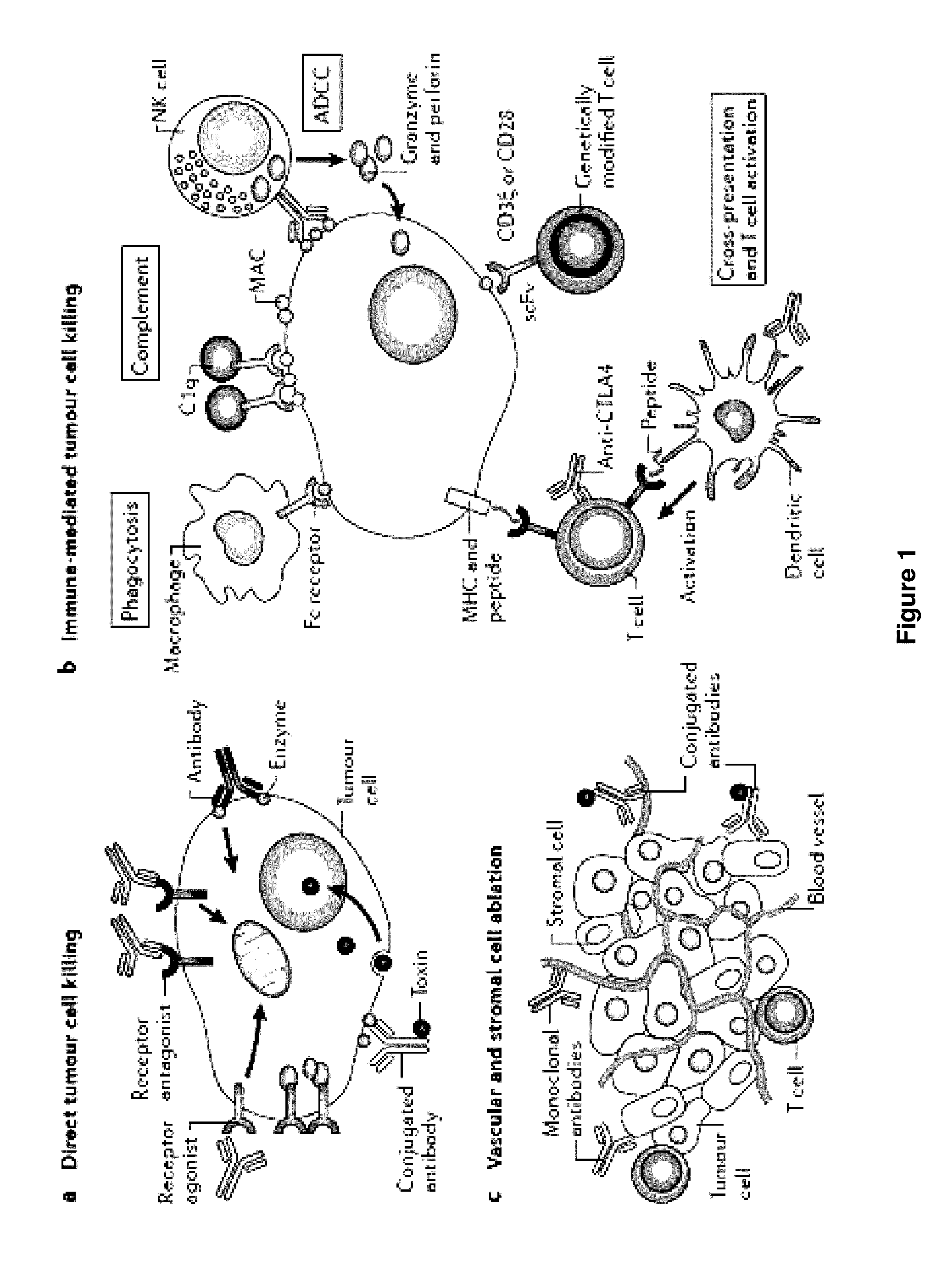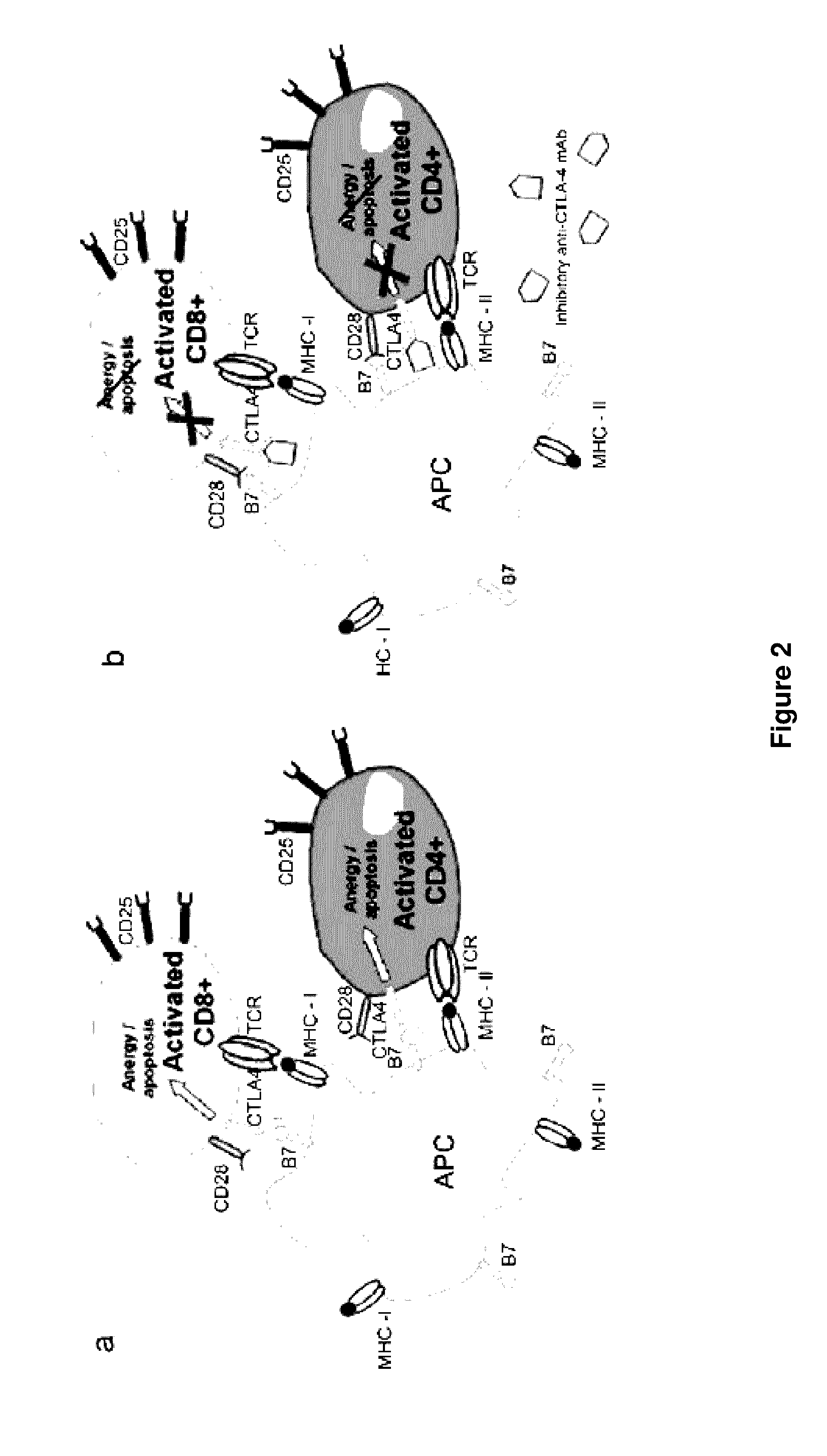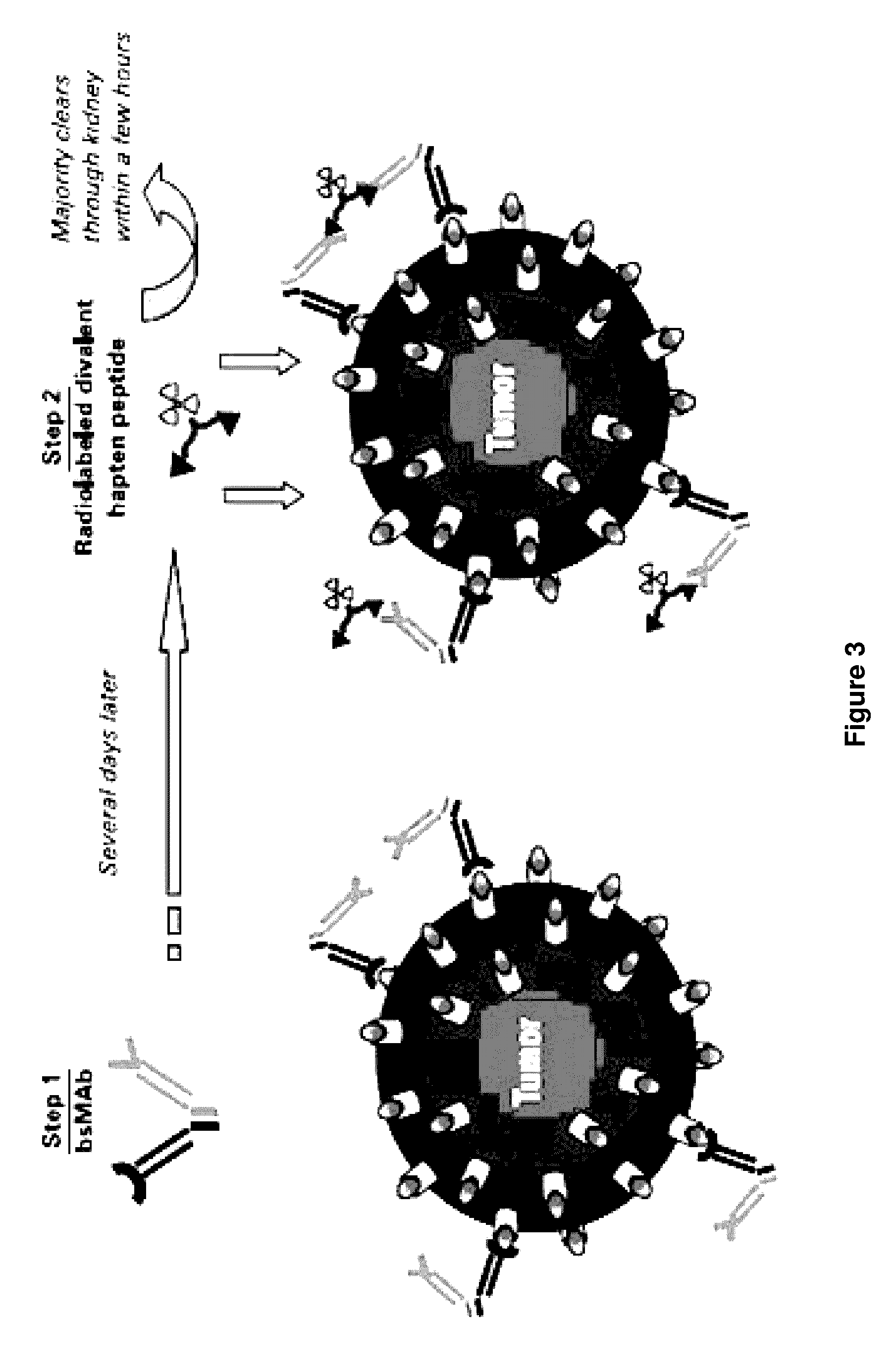Methods of targeting T-cells to tumors
a technology of t-cells and tumors, applied in the field of immunological methods, can solve the problems of difficult to target by antibodies, new reagent needs to be created, labor-intensive therapy cannot easily fit into current modes,
- Summary
- Abstract
- Description
- Claims
- Application Information
AI Technical Summary
Benefits of technology
Problems solved by technology
Method used
Image
Examples
example 1
[0055]This example demonstrates the methodology for pretargeting anti-CTLA-4 immunotherapy for murine syngeneic adenocarcinoma.
[0056]The tumor cells are derived from mammary tumors induced spontaneously in mice by the mouse mammary tumor virus (MMTV). These cells express the gp52 envelope glycoprotein of MMTV on their surface, which is used as a tumor specific antigen. BALB / cAnN (BALB / c) mice are used between 8 and 14 weeks of age. The BALB / c MTV+ tumor line (64PT) is used for the generation of lung metastases. The P2AE12 (anti-gp52), an IgG2b mouse mAb against MTV gp52 conjugated to streptavidin (P2AE12-StrAv) is used for pretargeting the tumors.
[0057]A murine syngeneic adenocarcinoma lung metastases model is used. Examples of such techniques are provided in, e.g., (Bakacs et al., Int. Immunol., 7, 947-955 (1995)). Normal adult female BALB / c mice are injected intravenously in the tail vein with 0.2 ml PBS containing 5×105 64PT-cells. This dose of cells gave rapidly growing tumors i...
example 2
[0064]This example demonstrates the methodology for pre-targeted anti-CTLA-4 immunotherapy for adult T-cell leukemia.
[0065]1.5 to 2.0×107 human adult leukemia T-cells are injected intraperitonealy into non-obese diabetic / severe combined immunodeficient (SCID / NOD) mice as described by (Phillips et al., Cancer Res., 60, 6977-6984 (2000)). The therapy experiment is performed on these mice when their sIL-2Rα levels are more than 1000 pg / mL in the serum, which occurs approximately 10 to 14 days after tumor inoculation. Mice are treated in two groups: (1) the serum sIL-2Rα ranges from 1000 to 10000 pg / mL in the small tumor-burden therapeutic group; and (2) serum sIL-2Rα ranges from 20000 to 70000 pg / mL in the large tumor-burden therapeutic group.
[0066]A humanized anti-Tac (HAT) anti-IL-2Rα monoclonal antibody is conjugated to streptavidin (HAT-StrAv). Tumor-bearing mice are injected intravenously with 140 or 400 μg (0.67 or 1.91 nmol) of the streptavidin conjugated antibody specific to IL...
example 3
[0074]This example demonstrates the methodology for pre-targeted anti-CTLA-4 immunotherapy for therapy of non-Hodgkin's lymphoma.
[0075]Approximately 7-9 weeks of age, female athymic BALB / c mice (NCI / Charles River Laboratories, Frederick, Md., USA) are implanted s.c. with 1×107 Ramos human B-cell lymphoma cells / 0.2 ml in the hind flank. When tumors are ˜1.0 cm diameter, treatment is initiated. The humanized streptavidin conjugated anti-CD20 IgG1, IMMU-106 antibody (CD20-StrAv) is injected first for pretargeting as described in (Stein et al., Clin Cancer Res., 10, 2868-2878 (2004)).
[0076]Tumor-bearing mice are injected intravenously with 140 or 400 μg (0.67 or 1.91 nmol) of the humanized streptavidin conjugated anti-CD20 IgG1, IMMU-106 antibody (CD20-StrAv). After 24 hours, which allows for antibody distribution and tumor localization, the unbound CD20-StrAv is cleared from the circulation by in vivo complexation with 100 μg (11.56 nmol) synthetic biotinylated poly(GalNAc)-clearing ag...
PUM
| Property | Measurement | Unit |
|---|---|---|
| concentration | aaaaa | aaaaa |
| diameter | aaaaa | aaaaa |
| weight | aaaaa | aaaaa |
Abstract
Description
Claims
Application Information
 Login to View More
Login to View More - R&D
- Intellectual Property
- Life Sciences
- Materials
- Tech Scout
- Unparalleled Data Quality
- Higher Quality Content
- 60% Fewer Hallucinations
Browse by: Latest US Patents, China's latest patents, Technical Efficacy Thesaurus, Application Domain, Technology Topic, Popular Technical Reports.
© 2025 PatSnap. All rights reserved.Legal|Privacy policy|Modern Slavery Act Transparency Statement|Sitemap|About US| Contact US: help@patsnap.com



